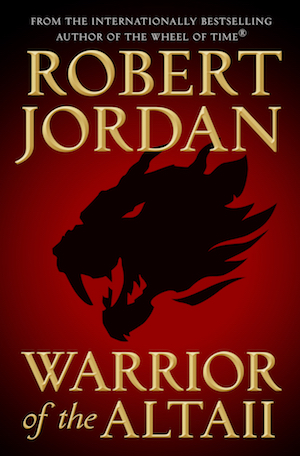Some books are mysteries and some books are ballads. Some are manifestos, or how-tos, some are dear-god-do-not-dos. Brandon Sanderson’s books are puzzles: well-crafted, meticulously put together, and very satisfying to finish.
Not that I am saying they are only puzzles: they contain mystery and romance, action and suspense, but he does have a unique narrative style. Take his second novel, Mistborn. It opens on a mystery, leaves a trail of puzzle pieces, and in the end we are able to form a full picture that is nothing like we expected.
“Ash fell from the sky.” With the opening line of Mistborn, Sanderson gives us our first clue. Readers familiar with his narratives already know the structure they will encounter: throughout the book, they will be given all the pieces needed to solve the puzzle of the plot. Often, the tools are the secrets of the magic system—and with these secrets, the reader is able to figure out the book’s challenges right alongside the characters.
In chapter one, we meet Mistborn’s protagonist, Vin, a street girl with an inherent sense that she calls luck. She also has the ability to sway others’ emotions. She knows nearly as little as the reader does about the mysteries to come, and that makes her an excellent window through which to watch the story unfold.
Her ability to bend emotions is a valuable gift. She is a thief, a slave, and is surrounded by men who have little consideration for her well-being. And wouldn’t luck have it that we meet her on the day that she bends the emotions of the wrong man? Her powers are detected by an Inquisitor of the Final Empire—a being who believes a slave girl is not worthy of gifts such as emotional manipulation.
This would have been the end of Vin, but another man—a man with her same extraordinary skill set, who understands her gifts much better than she does—also recognizes her power, and draws the Inquisitor off.
It is here that Sanderson does a rare thing: a choice that makes his books more puzzle than mystery. He shows us his hand—face up. (Well, at least most of it.) We are given all the functional pieces of his magic system in a single short chapter. It’s a risk—telling a reader about something outright isn’t normally seen as a narratively interesting way to convey information. By breaking this writers’ rule, Sanderson incurs a narrative debt…but he pays it off by letting the reader in on how the world works. This particular narrative choice also cuts out a couple hundred pages that most fantasy writers would allot to this task. We are told, and the we are swept into a world where certain men and women can burn metal in their blood, borrowing the metal’s power for themselves.
Buy the Book


Warrior of the Altaii
“You, Vin, are what is generally called a Mistborn,” Kelsier, the man who has drawn the Inquisitor off, tells our protagonist. He will become her mentor. Kelsier hands her a vial with flakes of metal: eight different metals suspended in solution.
Bronze to find another allomancer. Copper to hide from other allomancers. Zinc to enflame emotions. Brass to soothe and dampen emotions. Steel to push metals away. Iron to pull them closer. Tin to enhance the senses. Pewter to become strong and heal.
Some people can only burn a single metal, but if you can burn more than one, you can burn them all.
Sanderson gives us the rule book at the same time as it’s revealed to Vin, and so we can learn right alongside her as she explores her newfound powers.
“When I write my books, actually I’m known for very logical rule-based magic systems. I write with one foot in fantasy and one foot in science fiction,” Sanderson has stated about his fiction. He’s also set forth the following rule, which he’s dubbed Sanderson’s First Law of Magics:
“An author’s ability to solve conflict with magic is directly proportional to how well the reader understands said magic.”
For those of us who enjoy our literary concepts separate from the language of thermodynamics, one could say that if a writer clearly defines the rules of a system, a reader will then feel greater satisfaction when problems are solved using that magic system.
Vin learns to conquer the eight metals, but Sanderson leaves us with the mystery of one more, Atium: a metal that allows allomancers to see ever so slightly into the future.
Atium’s power is one that Sanderson also hopes to bequeath onto his readers. He has stated that one of his narrative goals is to have a reader recognise what will happen half a page before it does. This is how he rewards the reader for taking on the mental labour of learning the magic system—they become capable of solving the puzzle themselves, outwitting even the characters they are following.
I believe that this feeling is what keeps readers coming back to Sanderson’s worlds, excited for the chance to accumulate new knowledge, to solve riddles, and to feel like an active participant in the story.
Does this effort break suspension of disbelief in the narrative? Perhaps a bit—but in a way not dissimilar to reading hard-boiled crime fiction. When reading a murder mystery, the reader knows that one of the characters present in the narrative is the killer. Along with following the story, the reader is constantly trying to guess Who done it? and solve the case. This cognitive dissonance—that the characters are both real and also completely imaginary tools the writer is using to manipulate the reader’s guesswork skills—is also a key feature of Sanderson’s narratives. The reader is invested in the flesh and blood characters, and the reader is also trying to figure out how the magic system will be used to solve the problems encountered throughout the story.
A friend of mine recently read the Mistborn trilogy for the first time. He was thrilled with the books, and I asked him why he felt they were so compelling.
“The character development,” he said. “There’s as many characters as any epic fantasy novel, but I could relate to all of them. They all have backstories.”
Vin, and her mentor, Kelsier—the two Mistborn for whom the book is titled—are accompanied in the story by a group of allomancers. They are men who can bend the power of a single metal to their will. It is here, as my friend aptly pointed out, that Sanderson’s characterization shines. There is a shy boy who speaks in curious street slang who is bound to the gang of thieves by blood relation, a nobleman hiding as a slave, a grizzled and grumpy ex-soldier, and a menagerie of others.
Since the reader understands the magic system from the start, Sanderson constantly needs to pose greater and greater challenges for our protagonist and her troupe of allomancers to conquer. Her first challenge is to infiltrate the aristocratic society that has relegated her to the gutters and to prove she belongs to their ranks. But it is here that other Mistborn lie in wait, ready to put Vin’s new powers to the test.
As readers, we trust our protagonist will win, and Vin wins her first battle by an inch.
The narrative and the play-by-play descriptions of combat are thrilling, but I also found myself comparing the magic scenes to long-ago math class logic problems. For example, if two Mistborn are speeding toward each other, bolstered by the push of steel, and our heroic protagonist Mistborn has a stomach containing Pewter, Steel, Iron, Tin, and Atium, what metals are we hoping the evil, bratty antagonist Mistborn is lacking in her belly so that our hero will avail?
I know I’m hoping the bratty Mistborn runs out of Atium and Pewter before Vin does, even as I read along breathless…
Sanderson has given us the rules from the start, and by discovering the world alongside Vin, we are utterly engaged with each decision, each clue, each twist and turn. We hope she will burn Pewter to gain strength or Bronze to calm the excitement of an enemy…and when she does, we are able to pat ourselves on the back that we knew what was going to happen, because we’ve been learning the magic system right alongside her.
It’s almost as if we ourselves could be Mistborn. We know the rules, after all. If only we had the metals to burn.
Jaclyn Adomeit writes historical fiction, speculative fiction, and comics. In her spare time, she befriends stray cats and daylights as an environmental engineer. She can be found on Facebook, Twitter, and her website.










